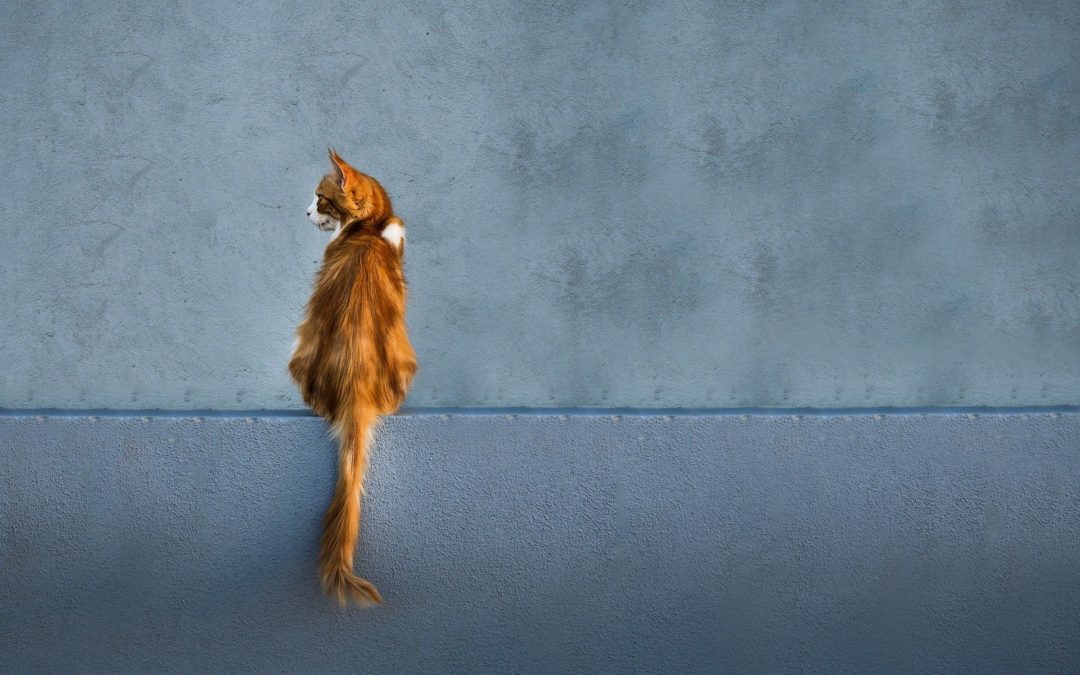If only our cats could speak! Although they may not be able to express their deep feelings about things, our felines are communicating quite a lot through their body language. When our kittens are young, they use meowing to communicate with each other. Once they’ve matured, their sweet purrs and sound effects are reserved for us humans. While our cats use their whole bodies to let us know what’s on their minds, their tail movements are a primary form of communication.
Your Cat’s Tail Movements
Once you know how to decode what your cat is telling you with her tail, understanding and adapting to her moods will come more easily.
High with a Hooked Tip: When Fluffy’s tail is erect and curved at the top like a question mark, she’s signaling that she’s in the mood to play. Consider taking a break from work or house chores to give her a little love.
Low or Tucked Between the Legs: A tucked or hidden tail is a sign that your kitty feels threatened and is bowing in submission, or that she feels insecure or anxious.
Fur Standing on End: If your felines tail resembles a pipe cleaner or feather duster, she’s frightened or agitated and is trying to appear larger to ward off perceived danger. If you observe this tail in your cat, do not interact and try to eliminate any obvious perceived threats.
Slowly Swaying: Cat’s move their tails this way, often with some twitching, when they are planning to pounce. It’s believed that the sway is enacted to mesmerize their prey.
Thumping & Whipping Back and Forth: It may just appear like your cat is wagging her tail, but this kind of tail movement belongs to a cat that is feeling aggressive and ready to attack.
Other Feline Body Language
Her Back: A cat with an arched back doesn’t always signify aggression. Take a look at her fur, if it’s standing up straight then she’s mad. If it’s relaxed and lying flat, then she’s welcoming your touch.
Her Ears: Ears that are pointed forward mean that your feline is alert or happy. Ears that are pointed backward, sideways or flat mean she’s irritable, frightened or angry. Ears that are moving back and forth mean she’s curious and attentive to every sound.
Her Noises: When your cat is chirping, she’s either communicating with other household cats, or she’s trying to get your attention and wants you to follow her. Purring is a universal sign of cat contentment. We also often hear our cats chatter when they’re sitting on the windowsill and dreaming of pouncing on that bird or squirrel.
Her Bursts of Energy: Also known as “zoomies,” an indoor cat that races around or out of the room is most likely releasing pent-up energy, arousal or frustration. Or, she may be fleeing the scene of a cat crime like pooping on your favorite chair or clawing at your carpets.
Give Us a Call!
If you have additional questions or concerns about your cat’s behavior, don’t hesitate to contact our staff at East Valley Animal Hospital in Gilbert or schedule an appointment for your fur baby. We simply love talking “cat!”
Images used under creative commons license – commercial use. Image by Tasos Lekkas from Pixabay (1/11/2020)

